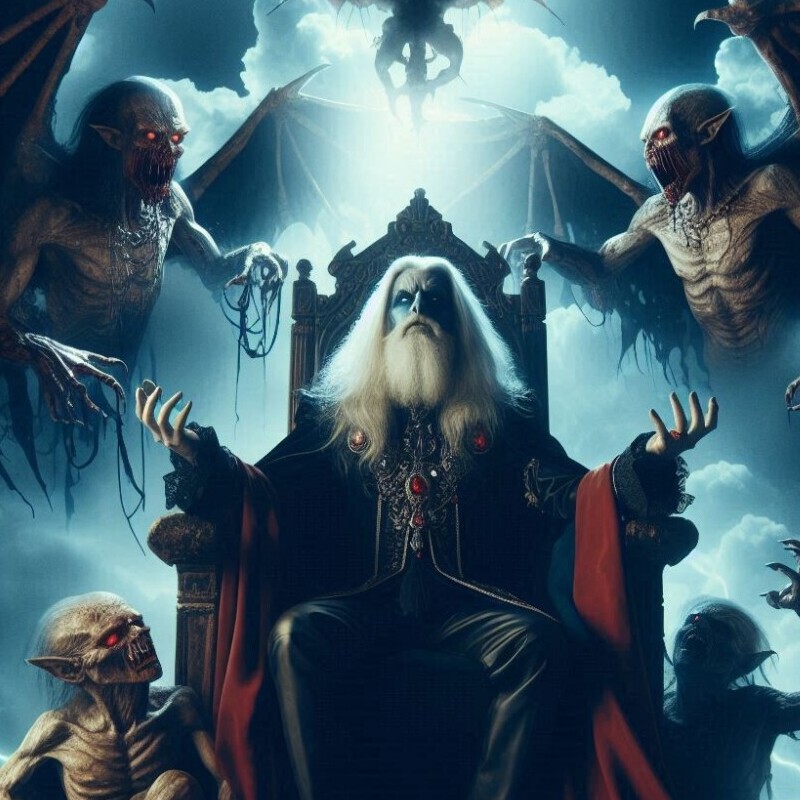Vampire: The Masquerade is all about exploring the depth of personal horror that comes with being a vampire. At the heart of this, you have The Beast, a relentless force that’s always pushing your characters to the edge. Balancing this inner monster while clinging to shreds of humanity is a thrilling challenge that defines the game.
Politics and intrigue aren’t just background noise; they’re part of the lifeblood of vampire society. Kindred factions, from the influential Camarilla to rebellious Anarchs, offer endless possibilities for drama and power struggles. These dynamics not only fuel the stories but also provide a rich landscape for players to navigate and manipulate.
The Masquerade is more than just a rule for vampires, it’s a way of life. The constant pressure to keep their existence hidden from humans while managing their complex society makes for a gripping narrative. Characters are always tiptoeing on the edge, risking exposure while dealing with internal and external threats.

The setting itself adds layers to the storytelling. The Gothic-Punk ambiance paints a dark backdrop where corruption festers under neon lights. This gritty world isn’t just decorative; it shapes the stories you tell. It’s the perfect stage for tales of despair and moral ambiguity, where every corner turned could reveal an ally, an enemy, or a new nightmarish challenge.
Understanding and embracing these themes isn’t just about setting the stage. They are the very threads that weave a complex, engaging story that keeps players invested and wanting more.
Crafting a Compelling World and Narrative
Choosing the right setting is like picking the perfect backdrop for your vampire drama. Real-world cities bring a certain authenticity that can deepen immersion, letting players rome familiar streets under the cloak of night. New York or London, with their rich histories and vibrant nocturnal life, offer endless inspiration. Alternatively, a homebrew city gives you unbridled creative freedom, allowing every street and shadow to serve the narrative you want to weave.
It’s crucial to think about how a city’s nightlife, politics, and culture influence its nocturnal residents. A city’s unique vibe can impact everything from power struggles to character interactions. Whether it’s the corporate underbelly of a city like New York or the political upheaval of a place resembling Berlin, the setting can become as much a character in your story as the vampires themselves.
Deciding on the theme and tone of your game is next. Whether you want an intimate tale of survival among the downtrodden or a sweeping narrative of grand political intrigue, narrowing down your focus will help keep the story on track. Noir, horror, action, or psychological thriller, the sky’s the limit, and each choice shapes the player’s journey in profound ways.

Then there’s the matter of faction dynamics. Camarilla, Anarchs, Sabbat, or independent Kindred, each brings its own flavor to the social stew. Introducing these groups can stir up intense rivalries or unlikely alliances, driving the drama and keeping players on their toes.
No world is complete without compelling NPCs. Characters need to be rich with secrets, ambitions, and tangled relationships that mirror the complexity of real people. These NPCs shouldn’t just fill space; they’re the catalysts that give stories momentum and depth, pushing players to make difficult decisions and question their loyalties.
Shaping a Player-Centric Storytelling Experience
Session Zero is where you lay the foundation for an engaging gaming experience. Setting expectations is vital. Discuss themes, limits, and what players hope to get out of the game. Whether it’s dark horror, emotional drama, or political machinations, everyone needs to be on the same page to create a cohesive and enjoyable experience.
Safety tools like Lines, Veils, and the X-card might sound formal, but they’re your best friends in ensuring everyone feels comfortable. They allow players to communicate discomfort and boundaries without disrupting the flow, making the game more inclusive and enjoyable for all.
Strong storytelling comes from characters with skin in the game. Encourage players to dream up backstories with personal stakes, be it a loved one turned rival or lingering regret over past actions. These narratives provide a treasure trove of plot hooks for you to weave into the city’s larger conflicts.

Coterie dynamics add another layer to the game, enhancing or complicating interactions. Do characters trust each other implicitly, or are they a powder keg waiting to blow? Navigating these relationships can lead to rich stories, full of tension and unexpected alliances.
Player decisions should always matter, incorporating their goals and actions into the overarching narrative. Making sure the group’s ambitions tie back into your planned story keeps everyone invested and engaged. Learnt to pivot, sometimes the best stories emerge from the unexpected turns that players create.
The Storyteller’s Toolkit: Balancing Mechanics and Atmosphere
Mechanics can be intimidating, but they’re just tools to enhance storytelling. The dice system, for example, is perfect for ramping up tension. Hunger dice introduce an element of risk and unpredictability that can turn even a simple situation into a high-stakes encounter.
Creating suspense and mystery is all about timing. Revealing plot twists slowly and using NPCs as unreliable narrators keeps players guessing. Dropping hints without laying everything out keeps the intrigue alive.
Establishing an atmosphere of horror means depicting Kindred as predators, living in a constant push and pull with their bestial nature. Gameplay should reflect that struggle, with moments that highlight their monstrous side while maintaining their unique brand of terror.
Introducing the supernatural should be done with care. Elders, Antediluvians, and other powerful beings need to be cleverly integrated so they don’t overpower players. Their presence should be felt, creating an ever-present dread that lurks in the shadows without stealing the spotlight.

The real trick is knowing when to lift the veil on The Beast’s true nature. Draw players deeper into the story by building up to these revelations, ensuring they hit hard and leave a lasting impact. It’s about creating moments that stick with your players long after they leave the table.
Navigating Player Agency and Story Evolution
Player choices should be the guiding force in your narrative. When they decide to betray an NPC or uphold the Masquerade, let those choices ripple out, impacting the game world meaningfully. These decisions anchor the story, allowing players to see the effects of their actions unfold in real-time.
Player-versus-player (PvP) conflicts can be tricky but also incredibly rewarding. It’s important to handle these situations with care to ensure they enrich the story rather than disrupt it. Encourage players to explore rivalries and alliances in ways that enhance drama and propel the plot forward.
Failure shouldn’t be a dead end but a chance for character development and story progression. When things don’t go as planned, use it as a springboard for new adventures and character arcs. Redemption, revenge, and adaptation can all become compelling story threads born out of failure.
Maintaining a balance between a structured narrative and allowing player freedom is a fine art. While having a general story framework helps keep things on track, being open to the unexpected paths players may lead you down is equally important. These moments often lead to the most memorable and unique storytelling opportunities.
If you have any questions or thoughts don’t hesitate to leave a comment below! Happy gaming!
Cheers, Erika 🙂

